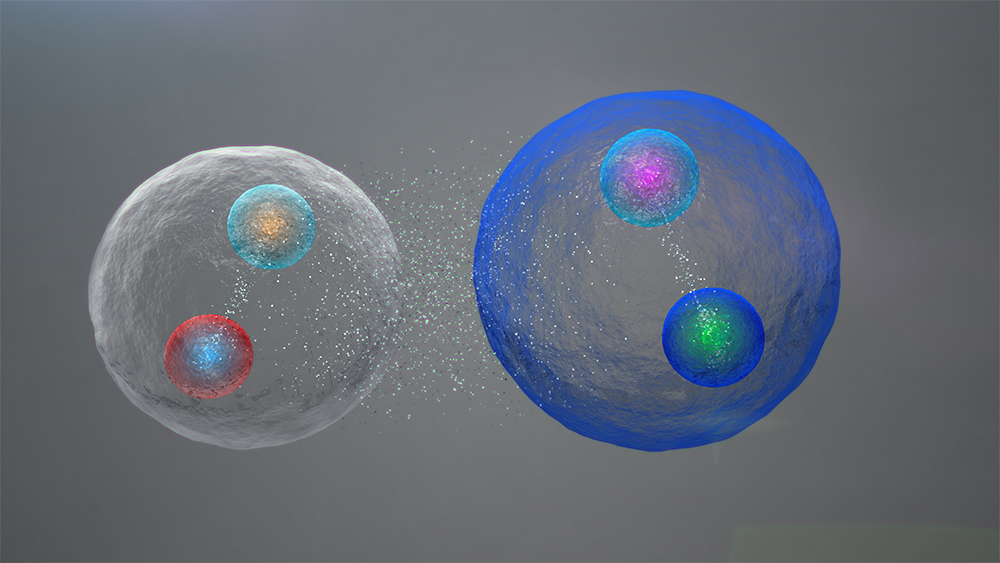
The Xc1(3872) hadron, which contains charm quarks, could be a pair of two-quark particles loosely bound together. (Image: CERN)
This media update is part of a series related to the , taking place 25-30 May 2020. Originally planned to be held in Paris, the conference is now taking place entirely online due to the COVID-19 pandemic.
The ALICE, CMS and LHCb collaborations at CERN present new measurements that show how charmed particles – particles containing charm quarks – can serve as “messengers” of two forms of matter made up of quarks and gluons: hadrons, which make up most of the visible matter in the present-day universe; and the quark-gluon plasma, which is thought to have existed in the early universe and can be recreated in heavy-ion collisions at the Large Hadron Collider (LHC). By studying charmed particles, physicists can learn more about hadrons, in which quarks are bound by gluons, as well as the quark-gluon plasma, in which quarks and gluons are not confined within hadrons.
The main results are:
- The LHCb team obtained the most precise yet measurements of two properties of a particle known as χc1(3872), a hadron containing charm quarks. The particle was discovered in 2003 and it has remained unclear whether it is a two-quark hadron, a more exotic hadron such as a tetraquark – a system of four quarks tightly bound together – or a pair of two-quark particles weakly bound in a molecule-like structure. Pinning down the nature of this hadron could extend physicists’ understanding of how quarks bind into hadrons.
“Our results are consistent with χc1(3872) being a pair of two-quark particles loosely bound together, but it does not fully rule out the tetraquark hypothesis or other possibilities,” says LHCb spokesperson Giovanni Passaleva.
- The CMS collaboration observed for the first time the transformation, or “decay”, of another particle, called B0s, into the same χc1(3872) particle. The researchers compared this decay with the previously observed decay of the B+ meson, which had led to the first detection of the χc1(3872) in 2003. Both types of decay link the behaviour of this hadron to the up and strange quarks.
“Measured differences in the decay rates are intriguing and could provide further insight into the nature of the χc1(3872), which has not yet been fully established,” says CMS spokesperson Roberto Carlin.
- The ALICE collaboration measured the so-called elliptic flow of hadrons containing charm quarks, in heavy-ion collisions. The hadrons are created during collisions that also create a quark-gluon plasma. Hadrons containing heavy quarks, like the charm quark, are excellent “messengers” of the quark-gluon plasma, meaning they carry important information about it.
“The pattern observed by ALICE indicates that the heavy charm quarks are dragged by the quark-gluon plasma’s expansion,” says ALICE spokesperson Luciano Musa.
Looking forward, the LHC collaborations aim to make more precise measurements of these messengers of the quark world using data from the next LHC run, which will benefit from largely upgraded experiment set-ups.






